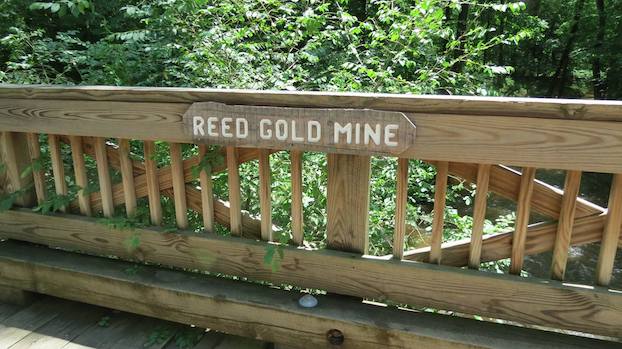There was gold in them there hills
Published 3:08 pm Monday, June 5, 2023
|
Getting your Trinity Audio player ready...
|
I was given the awesome opportunity to share underground railroad history, so last weekend Milt, my sister Lena and I travelled to Pineville, NC to do a Living History presentation at the President James K. Polk State Historic Site. We had an fabulous time at the presentation and afterwards we spent a wonderful afternoon searching out and discovering more history in the Piedmont area.
We uncovered some fascinating history that involved the Reed Gold Mine and a possible Washington, NC connection.
It turns out those old family stories about local enslaved people working in a gold mine in the Piedmont may not so far-fetched at all. ‘Aunt Cinder’ and ‘Uncle Ruffen’ as they were called by neighbors, who were into born in slavery to a Washington family, may have been telling the truth. They said they had in-laws that worked in the Reed Goldmine. Enslaved people worked in the Cabarrus County gold mine for decades. The Reed Gold Mine was the first documented gold mine in the United States and North Carolina led gold mining production until 1848 when California took over.
In 1799, Conrad Reed, the son of farmer John Reed, found a 17-pound yellow “rock” while placer mining in a creek bed in Little Meadow Creek on the family farm in Cabarrus County near Charlotte. For three years, the rock served as a big doorstop. In 1802, a jeweler from Fayetteville saw the door stop and identified it as a large gold nugget. He asked John Reed what he would sell the gold rock for and Reed, not understanding the true value of gold, priced it for what he thought was the hefty price of $3.50, or a week’s worth of wages. The large nugget’s true value was around $3,600.
About 1803, John Reed organized a small gold mining operation. Soon afterward an enslaved man, one of Reed’s 18 enslaved people named Peter, found a 28-pound nugget. There are no records to say he kept the gold, but local legend said he did. A few enslaved people working in the mines did amass tiny amounts of gold which they used to buy their freedom. Reed continued placer mining for a number of years. The Reed mine became a huge success and became one of NC’s three major goldmines.
Other folks in the area began searching creek beds for gold and by 1804, the United States Mint in Philadelphia had processed $11,000 in Cabarrus County gold. By 1824 that amount increased to$100,000. From these discoveries, gold mining spread gradually to nearby counties and eventually into other southern states, later becoming the great gold rush to California.
In 1831 Reed began underground mining for gold. When he died in 1845, he had become rich from the gold found on his property.
Some years later, the American Civil War decreased mining activity because of labor and resources being pulled into the war. After the war, Armin Kelly brought the mine. The last large nugget uncovered by placer mining was discovered in 1896. The last underground mining took place at the Reed Mine in 1912. To handle the large amount of gold found in the region and state from the 19th into the early 20th century, the Charlotte Mint was built in nearby Charlotte.
Today, the Reed Mine is a state historic site that belongs to the North Carolina Department of Natural and Cultural Resources and open to the public.
Leesa Jones is a Washington native and the co-curator of the Washington Waterfront Underground Railroad Museum.







